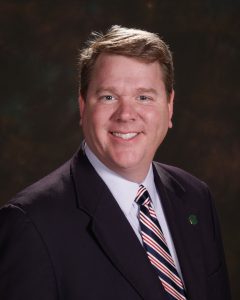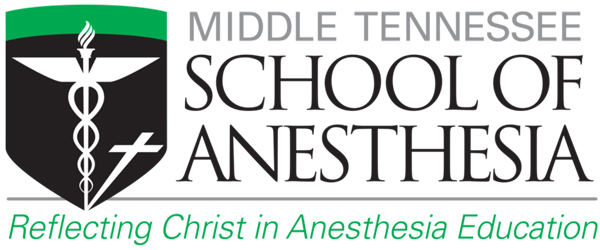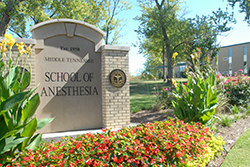MTSA President Chris Hulin’s op-ed published in The Tennessean
April 19, 2018
MTSA President Chris Hulin penned an op-ed for The Tennessean newspaper in which he addresses how to “head off the opioid problem at the source.”
Click here to read the entire article at The Tennessean‘s website, or scroll down.
Opinion | Here is how to head off the opioid problem at the source
Chris Hulin | Opinion Published 12:00 p.m. CT April 11, 2018
STORY HIGHLIGHTS
Can we do better to prevent a patient’s reliance on highly addictive prescription drugs? Yes.
Chris Hulin is president of Middle Tennessee School of Anesthesia in Madison.

When a patient is at risk of dying from a traumatic wound, the first order of business is to stop the bleeding. The opioid crisis calls for the same type of triage.
We must put immediate, focused pressure at the point where the problem often starts: when a patient undergoes surgery and needs acute pain management.
The traditional method for treating surgical pain has been deeply ingrained over the years. Opioid-based drugs, such as morphine and fentanyl, are administered intravenously during surgery. Then other opiates are usually taken orally during the recovery period with the hope that the patient doesn’t enter a cycle of dependency and abuse. But this is wishful thinking, and the statistics bear that out.
JAMA Surgery, an academic journal network of the American Medical Association, reported this year that in a study of 36,177 patients, 5.9 to 6.5 percent developed new “persistent opioid use” following surgery. Recently published research by QuintilesIMS Institute shows that nearly 3 million patients undergoing surgeries in 2016 became newly persistent opioid users.
Of the seven surgeries studied in its analysis, colectomy (an operation removing a portion of the colon) and knee replacement surgeries put patients most at risk—leading to 17.6 percent and 16.7 percent of patients, respectively, becoming persistent opioid users.
These statistics should raise a major red flag for providers and policymakers. We must ask ourselves, Can we do better to prevent a patient’s reliance on highly addictive prescription drugs? Fortunately, the answer is yes.
There are better pain-management options available today that in many cases don’t require patients to take an opioid-based drug. Ever.
One way to accomplish this is to use ultrasound-guided regional anesthesia—administered by a certified registered nurse anesthetist, which blocks the pain at the point of surgical contact.
The non-addictive anesthetic replaces the need for IV opioids during surgery, while a steady dosage of over-the-counter medication after surgery keeps the patient pain free during recovery.
No need for a prescription opioid means one less opportunity to become exposed to an addictive substance.
With this knowledge, I was able to insist that no opioids be used when doctors operated on my foot to alleviate a bone spur. I was awake during the procedure and felt no pain as a “peripheral nerve block” was used.
I was able to skip the usual course of post-operative opioids, and my pain was controlled with Tylenol and ibuprofen since my body was able to partially recover from the surgery while my foot was still numb.
As the baby boomer generation ages, increasing numbers of patients will undergo surgery, and CRNAs will be responsible for managing these patients’ acute surgical pain. Middle Tennessee School of Anesthesia is equipping CRNAs with the necessary knowledge and skill-sets to meet this growing demand.
These efforts are centered in the nation’s only Acute Surgical Pain Management Fellowship, which is a partnership between MTSA and the American Association of Nurse Anesthetists.
From medical-management approaches, such as multimodal therapies and opioid-sparing strategies, to advanced interventional techniques, including continuous catheter utilization, CRNAs are able to treat patients with confidence and skill.
As the QuintilesIMS Institute study points out, reducing surgery-related opioid prescribing by 10 percent could prevent 300,000 people each year from becoming persistent opioid users following surgery. This would significantly reduce the number of patients at high risk of dependence or addiction and avoid overdose deaths.
Treating patients after they’re addicted is a critical part of this battle, but we should also be doing more to head off the problem before it starts. We need fewer opioids to be prescribed in the first place.
It’s time we wrap a tourniquet around this country’s opioid epidemic. Using multimodal regional anesthesia when appropriate, instead of opioids for pain management, is a preventive measure that can save lives. I urge the medical profession to take notice and adopt these and other opioid-sparing treatment options.
Chris Hulin is president of Middle Tennessee School of Anesthesia in Madison.








